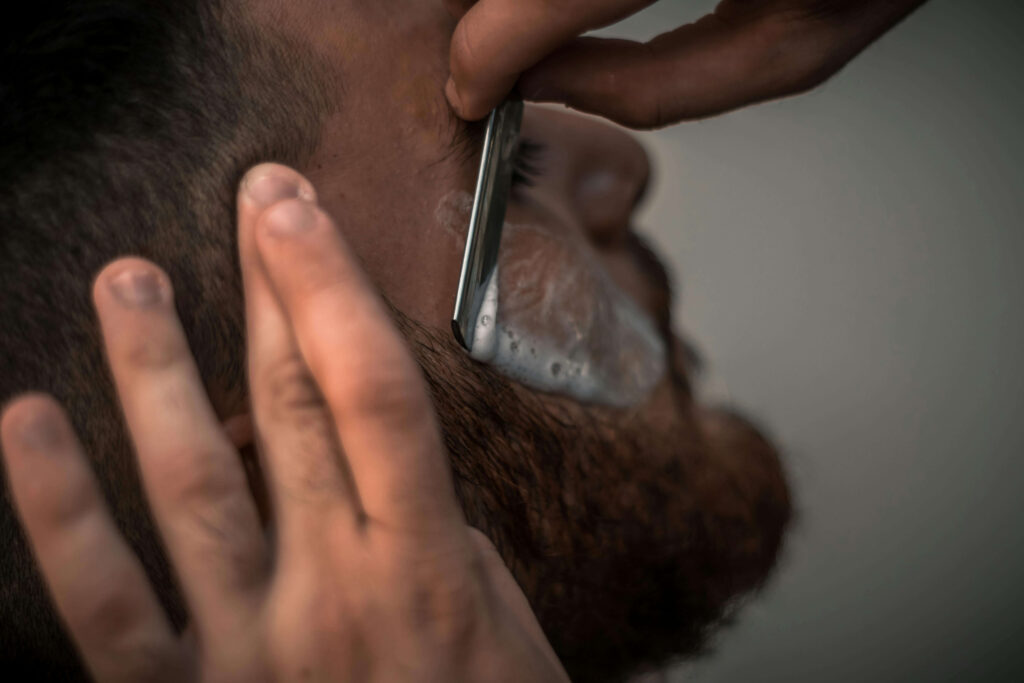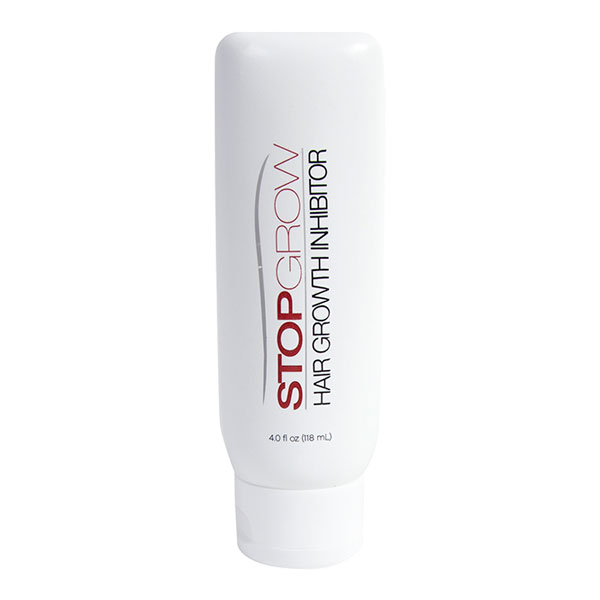Spring ushers in a season of rejuvenation and outdoor activities. The warm embrace of sunnier days and the promise of blossoming flowers leave us contemplating the age-old ritual of hair removal. The desire for smoother skin leads many on a quest for safe, effective, and lasting solutions.
While the traditional methods of waxing, shaving, and, more recently, hair removal creams have dominated the market, a subtle revolution is underway for those with smooth skin aspirations.
Shifting towards a more sustainable and progressive approach to hair management, many individuals have unearthed a powerful yet discreet ally in personal grooming – the hair growth inhibitor.
Today, we unravel the mysteries surrounding the hair growth cycle, from the impact of lifestyle choices to the role genetics and hormones play, as we explore the science behind inhibiting hair growth. We also investigate hair growth inhibitors as a potential secret weapon against the persistent specter of springtime stubble.
Join us as we explore an alternative that doesn’t merely trim the surface but challenges the very roots of regrowth in the pursuit of smooth, hair-free skin.
Factors Influencing Hair Growth
A complex interplay of factors determines the duration of each hair growth phase, influencing the length, thickness, and health of hair growth. These factors help shape unique strategies to minimize and manage hair growth in specific areas, empowering men and women as they strive for smoother, more controlled skin.
Hormones
Hormones are crucial to hair growth, particularly androgens like testosterone and dihydrotestosterone (DHT). Androgens contribute to facial hair growth in men and body hair in women, significantly influencing hair growth patterns. Hormonal imbalances can lead to undesired hair growth in facial hair for men and legs and underarms for women.
Genetics
Genetics dictate much about our hair, from its color and texture to its susceptibility to certain conditions. Not only does the genetic code determine facial hair patterns in men, but it also influences the thickness and distribution of body hair in women. Familial hair traits provide insight into practical strategies for hair management.
External Factors
Environmental influences, hair treatments, and styling practices directly impact overall hair health. The quality and appearance of hair are affected by sun exposure, pollutants, and harsh chemicals. Minimizing external stressors supports optimal hair management results.
Traditional Hair Removal Methods
Traditional hair removal strategies have long been the go-to for achieving smooth skin. While each method has its merits, they also come with unique challenges. Understanding their nuances is essential for making informed choices aligned with preferences and desired outcomes.
Let’s explore the pros and cons of these traditional methods.
Shaving
The most widely adopted hair removal method is shaving, primarily due to its simplicity and accessibility. Since it only involves using a razor to cut hair at the skin’s surface, shaving provides a quick solution for male facial hair and various body areas for women.
Common Challenges
Although popular, shaving has its share of drawbacks that can lead to discomfort and affect the desired smoothness. Razor bumps and ingrown hairs are the most common issues. Razor bumps occur when hair follicles become inflamed, while ingrown hairs result from hair growing back into the skin instead of outward.
Waxing
Waxing removes hair from the root, offering longer-lasting results. The process involves applying warm wax to the skin, which adheres to the hair to be removed. As the wax cools, it hardens and is swiftly pulled off, removing unwanted hair along with it. This method effectively removes hair from larger areas, leaving smoother skin for an extended period.
Common Challenges
Waxing can be painful for those with low pain thresholds despite its effectiveness and longevity. In some cases, this method may lead to redness, irritation, and ingrown hairs. Proper pre- and post-waxing care is crucial for minimizing discomfort and adverse reactions.
Hair Removal Creams
Depilatory creams, commonly known as hair removal creams, use chemical formulations to break down the keratin, a protein naturally in the hair, at the skin’s surface. The cream is applied to the area of unwanted hair, left for a specified duration as each strand of hair weakens, and then wiped away. The cream takes the dissolved hair with it, leaving behind smooth skin.
Common Challenges
While hair removal creams are painless and provide fast results, they only offer temporary results. Since the hair is only removed at the skin’s surface, regrowth occurs quickly, and frequent application is necessary to maintain smoothness. Additionally, some individuals experience skin sensitivity or reactions due to the chemicals involved.
Laser Hair Removal
Laser hair removal employs concentrated beams of light to target hair follicles. The process inhibits future hair growth by damaging the follicles, producing long-lasting results. Including this technologically advanced hair removal strategy among the traditional methods may seem odd; it actually began to grow in popularity almost three decades ago and is particularly effective on darker, coarser hair.
Common Challenges
While laser hair removal boasts impressive effectiveness, it has unique considerations. It may require multiple sessions for optimal results, and individuals with lighter hair may experience reduced efficacy. Additionally, temporary skin irritation following the procedure is possible.

Hair Growth Inhibitors: An Innovative Hair Removal Method
While traditional methods served as stalwarts in the pursuit of smooth skin in the past, an innovative approach emerged that addresses the limitations posed by these time-honored practices. This modern alternative seeks to revolutionize the way we remove undesired hair.
Hair growth inhibitors target the roots of regrowth, promising a more sustainable, convenient, and effective approach to lasting smoothness. Hair growth inhibitors don’t just address existing hair; they actively hinder its future regrowth. Let’s dive into the science behind these inhibitors and explore their potential for achieving smoother, hair-free skin.
Hair Growth Cycle
While the goal may be to limit hair growth, losing hair or its thickness isn’t the solution most people seek. Grasping the intricacies of the hair growth cycle is pivotal for mastering the art of effective hair management.
The cycle consists of the following three phases:
- The Growth Phase (Anagen) – The active growth period of a hair follicle where cells in the root of the hair divide rapidly, leading to new hair formation
- The Transitional Phase (Catagen) – This brief phase signals the end of active hair growth when the hair follicle shrinks and detaches from the structure that nourishes it.
- The Resting Phase (Telogen) – This is the dormant phase where the hair is no longer growing actively; the process when the follicle re-enters the anagen phase is known as shedding.
Each strand of hair undergoes these phases independently, influencing the rate and thickness of hair growth. Implementing successful, targeted strategies to address specific stages requires understanding this cyclical process.
How Hair Growth Inhibitors Work
Hair growth inhibitors disrupt the enzymatic processes crucial for hair development on a molecular level. They target enzymes involved in synthesizing structural components necessary for robust hair growth and inhibit them. The inhibitors impede the natural progression of hair, reducing thickness and overall regrowth.
Unlike traditional hair removal methods, which focus on removing existing hair, these game-changing products extend their impact beyond the visible surface. Hair growth inhibitors slow down the regrowth stage of the hair cycle by prolonging the telogen phase and delaying the onset of the anagen phase for a more extended period of hair-free skin.
Lifestyle Choices for Optimal Hair Health
Men and women can empower themselves to cultivate an environment conducive to optimal hair health and management by considering the impact of lifestyle choices on the hair growth cycle.
The Role of Nutrition in Promoting or Inhibiting Hair Growth
Nutrition is the cornerstone for overall well-being, so it’s no surprise that its impact extends to the health of our hair. A diet rich in vegetables, fruits, whole grains, and lean proteins fosters an environment conducive to vibrant hair.
Essential nutrients like vitamins A, B, C, and E and minerals like zinc and iron also promote healthy hair growth. Conversely, thinning hair and hair loss can be attributed to nutrient deficiencies.
The Impact of Stress on Hair Health
The connection between stress and hair health is a well-established phenomenon. Chronic stress may contribute to conditions like alopecia areata, while elevated stress levels can trigger hormonal imbalances, causing hair to enter the resting phase and shed excessively prematurely.
As a result, managing stress becomes essential for maintaining optimal hair health. Focus on minimizing or reducing stress through relaxation techniques, mindfulness, and adequate self-care.

Unleash Your Confidence – Embrace Your Hair Removal Journey
In the ever-evolving quest for smooth, hair-free skin, explore, experiment, and relish the liberation of choice – whether you opt for traditional methods or embark on the innovative path of hair growth inhibitors like Stop Grow Hair Growth Inhibitor. This revolutionary product offers enduring smoothness and a gentler approach.
Empowerment lies in embracing personal grooming choices that resonate with your unique style. Allow your personal comfort to guide your hair removal journey and transcend societal expectations.
Seize the opportunity to experience radiant, smooth skin and unleash your confidence.
